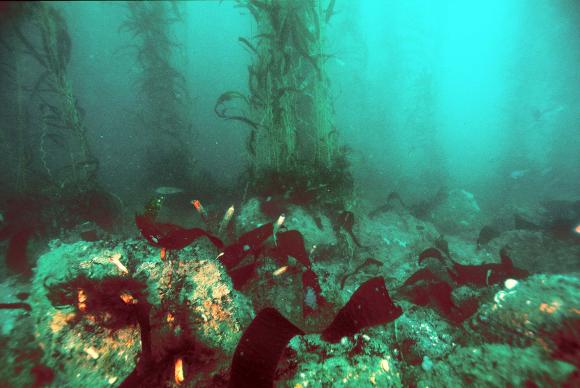The SONGS Coastal Development permit requires that the following performance standards be used to measure the success of the Wheeler North Reef.
- The mitigation reef shall be constructed of rock, concrete, or a combination of these materials.
- The total area of the mitigation reef (including the experimental reef modules) shall be no less than 150 acres.
- At least 42% but no more than 86% of the mitigation reef area shall be covered by exposed hard substrate
- At least 90 percent of the exposed hard substrate must remain available for attachment by reef biota.
- The artificial reef(s) shall sustain at least 150 acres of medium-to-high density giant kelp.
- The standing stock of fish at the mitigation reef shall be at least 28 tons.
- The resident fish assemblage shall have a total density and number of species similar to natural reefs within the region.
- Fish reproductive rates shall be similar to natural reefs within the region.
- The total density and number of species of young-of-year fish shall be similar to natural reefs within the region.
- Fish production shall be similar to natural reefs within the region.
- The benthic community (both algae and macroinvertebrates) shall have coverage or density and number of species similar to natural reefs within the region.
- The benthic community shall provide food-chain support for fish similar to natural reefs within the region.
- The important functions of the reef shall not be impaired by undesirable or invasive benthic species.

Sandbass (Paralabrax nebulifer) on the newly constructed Wheeler North Reef. Photo Credit: Richard Herrmann (SCE)

An assemblage of understory macroalgae in a giant kelp forest
The methods for evaluating whether the Wheeler North Reef meets each of the performance standards and the process for assigning mitigation credit are described in the Monitoring plan for SONGS reef mitigation.